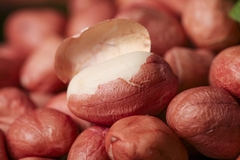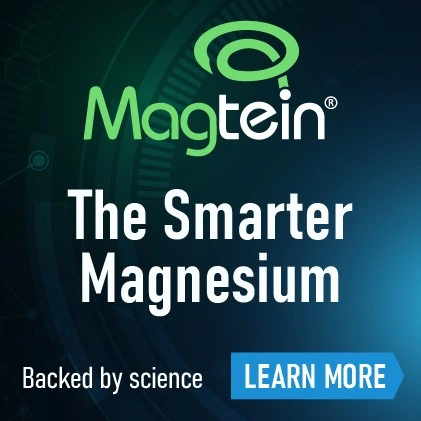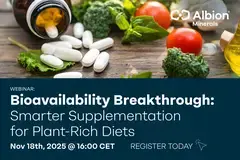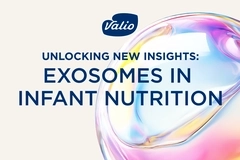GEA technology facilitates algae production growth for sustainable food supply
09 Jul 2019 --- The impending issue of how to feed a growing population of 10 billion people by 2050 is leading industry to seek less traditional food and nutrition sources – such as algae. Despite challenges in this space, ranging from R&D to collection and processing, GEA is offering technologies to accompany start-ups and algae producers and help them to meet strict industry standards.
The growing focus on refining algae to support sustainable food production has drawn GEA and several partners from the EU’s scientific and business community to form the Sustainable Algae Biorefinery for Agriculture and Aquaculture (SABANA) project in 2016, which is a EU-funded Horizon 2020 initiative.
 Spirulina is known for its vivid blue hue and is used across a range of applications. A rich source of polyunsaturated fatty acids, proteins, enzymes, vitamins, minerals and trace elements, algae has become a highly sought after raw material for numerous products in the pharma, chemical and food sectors. Its potential application areas include toothpaste, facial cream, animal feed, food and food supplements and natural food colorants. Likewise, increasing demand for reliable, sustainable, and low-cost sources of energy and biodegradable plastics are major factors expected to drive growth in this robust sector, GEA reports.
Spirulina is known for its vivid blue hue and is used across a range of applications. A rich source of polyunsaturated fatty acids, proteins, enzymes, vitamins, minerals and trace elements, algae has become a highly sought after raw material for numerous products in the pharma, chemical and food sectors. Its potential application areas include toothpaste, facial cream, animal feed, food and food supplements and natural food colorants. Likewise, increasing demand for reliable, sustainable, and low-cost sources of energy and biodegradable plastics are major factors expected to drive growth in this robust sector, GEA reports.

From a nutritional standpoint, they contain beneficial omega 3 fish oils. Importantly, algal oil has potent potential to support global nutritional needs and can help take the pressure off the global fish supply. Existing in either marine or freshwater form, algae are further classified according to size – macro or microalgae, such as chlorella and spirulina, and by color: blue, green, brown or red.
Intricate processing techniques
Cultivating algae encompasses a number of technical steps from harvesting, processing and concentration.
For the concentration process, GEA can offer several separators and decanters, each with individual advantages specific to algae type and cultivation conditions. While for the processing of red and green microalgae, GEA homogenizers are ideal, as they deliver the extremely high-quality raw material required for food and vitamin supplements as well as biomaterial or bioplastics.
This technology ensures reliable and long-lasting components that meet aseptic requirements and products that are fully compliant with all regulations. Homogenization is a mechanical process which breaks the outer cell wall with up to 1500 bar to release the intracellular fluid. Cross-section view of a GEA separator showing liquid flow pattern, including discharge system.
Cross-section view of a GEA separator showing liquid flow pattern, including discharge system.
Processing, or harvesting, is necessary to separate the algal biomass from the water it was grown in – a field GEA has been active in since the 1960s, with technologies for concentrating, extracting and washing algae, as well as drying.
Modern algae processing requires centrifugal technology to concentrate, extract and wash the harvested algae suspensions. Due to the biological makeup of algae, centrifuges are often the only economical means by which to efficiently process microalgae, not only because they use less energy than ceramic membrane filtration, but also because cell size causes binding or blockage in traditional rotatory vacuum filters.
GEA developed a solution for discharging extremely shear-sensitive cells like Diatoms and Haptophyta from the rotating system without damaging or destroying them, given mortality rates can reach more than 90 percent even at reduced speeds. Most processed products can handle rough treatment without any negative effect, and during normal ejection, the bowl is opened while operating at full or reduced speed and the gathered solids are simply shot out into the catcher.
In the case of algae, the centrifuge concentrates the cells and collects them during operation in the solids holding space at the bowl periphery – the exact spot in the centrifuge where centrifugal forces are highest. The key to GEA’s solution was finding a way to slow the solids down during discharge, thus reducing the speed with which the cells collide against the catcher wall. This led to the development of the GEA hydro brake assist ejection system.
 A rich source of fatty acids, proteins, enzymes, vitamins and minerals, algae has become a sought after raw material.Partnering to meet growing global demand
A rich source of fatty acids, proteins, enzymes, vitamins and minerals, algae has become a sought after raw material.Partnering to meet growing global demand
For start-ups and businesses in the algae industry, funding is key to moving from the laboratory to the pilot phase. Investors generally want some evidence that demonstrates that a given technology works on a small scale or can be scaled up to produce several tons of algal biomass or gallons of algal oil before committing funds. Key factors in successfully scaling up algae production and processing are reducing energy consumption and operating costs.
Since 2015, GEA has supported a French bio-technology start-up, beginning with onsite separation trials. Working together, GEA helped the customer develop a customized algae harvesting process that produces high-quality biomass microalgae at industrial scale for use in animal nutrition, food and cosmetics. The GEA viscon nozzle separator, for example, is being used in heterotrophic microalgae separation, resulting in homogeneous algae concentrate with maximum dry matter using a fully-CIP-able machine for high separation efficiency.
Dutch company Duplaco is also leveraging GEA separation know-how to process chlorella microalgae, grown via heterotrophic fermentation, which can be used in the production of healthy foods, like smoothies, algae burgers or pasta, in food supplements or animal feed. GEA solutions help ensure that Duplaco’s algae powder and food supplements are of high quality with maximum consistency while minimizing the producer’s energy costs and production footprint.
Edited by Laxmi Haigh
















